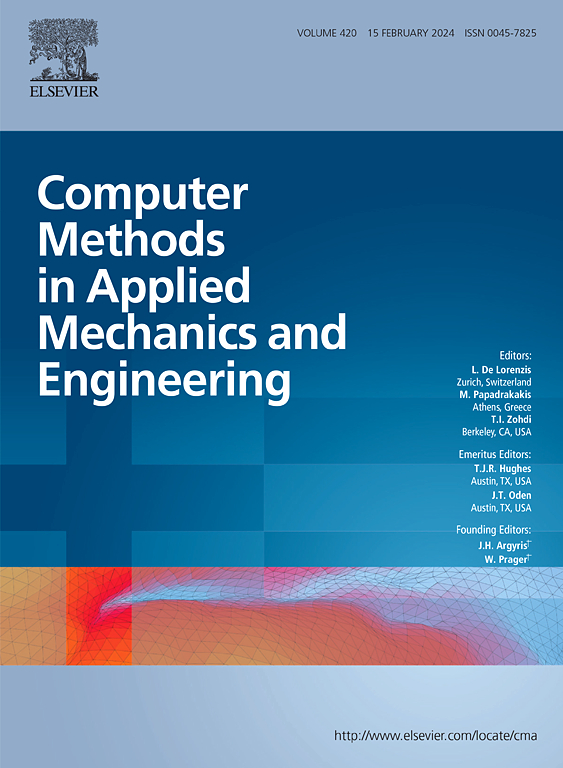A parametric non-linear non-intrusive reduce-order model using deep transfer learning
IF 6.9
1区 工程技术
Q1 ENGINEERING, MULTIDISCIPLINARY
Computer Methods in Applied Mechanics and Engineering
Pub Date : 2025-02-12
DOI:10.1016/j.cma.2025.117807
引用次数: 0
Abstract
Reduced order modelling is popular and widely used in engineering as it has the potential to gain several orders of magnitude CPU speedup for simulations with different parameters such as different initial or boundary conditions. This work presents a new parametric non-linear non-intrusive reduced-order model (P-NLNIROM) for the fluid problems, which extends the capabilities for non-linear NIROM Fuet al. (2023) on parametric problems. The Deep Auto-Encoder (DAE), Deep Residual Learning Neural network (ResNet), and deep transfer learning are used to construct the P-NLNIROM. The DAE is developed to project or map the original high-dimensional dynamical systems into a much lower dimensional nonlinear reduced latent space and the deep ResNet is used to construct a set of functions that represents the relationships between model input parameters (such as initial or boundary conditions) and extracted representations in the latent or reduced space (reduced representation of fluid dynamics). Transfer learning is used to extend the predictive capability of the model for different parameters. The novelty of this work lies in that ResNet and transfer learning are used to predict different parametric conditions for the AutoEncoder-based, non-linear, non-intrusive reduced-order model (NLNIROM). Transfer learning expands the predictive range of parametric space and makes the transferred P-NLNIROM perform well with much less data. The capability of this new P-NLNIROM is illustrated numerically by two test cases: a lock exchange, and a flow past a cylinder. The results obtained show that the P-NLNIROM performs well and the transferred model shows more promising results under new parameter conditions.
求助全文
约1分钟内获得全文
求助全文
来源期刊
CiteScore
12.70
自引率
15.30%
发文量
719
审稿时长
44 days
期刊介绍:
Computer Methods in Applied Mechanics and Engineering stands as a cornerstone in the realm of computational science and engineering. With a history spanning over five decades, the journal has been a key platform for disseminating papers on advanced mathematical modeling and numerical solutions. Interdisciplinary in nature, these contributions encompass mechanics, mathematics, computer science, and various scientific disciplines. The journal welcomes a broad range of computational methods addressing the simulation, analysis, and design of complex physical problems, making it a vital resource for researchers in the field.

 求助内容:
求助内容: 应助结果提醒方式:
应助结果提醒方式:


